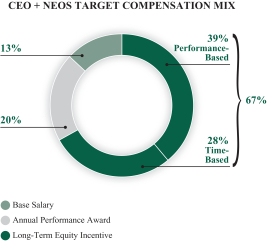
2100 McKinney Avenue, Suite 1250
Dallas, Texas 75201
(214) 979-6100
April 5, 2021
Dear Fellow Stockholder:
On behalf of the Board of Directors and management of CBRE Group, Inc., I cordially invite you to attend our annual meeting of stockholders on Wednesday, May 19, 2021 at 10:00 a.m. (Central Time) (the “Annual Meeting” or the “2021 Annual Meeting”). The 2021 Annual Meeting will be a virtual meeting of stockholders. You will be able to attend the 2021 Annual Meeting, vote your shares electronically and submit your questions during the meeting via live webcast by visiting www.virtualshareholdermeeting.com/CBRE2021. Stockholders will be able to listen, vote, and submit questions from their home or any location with internet connectivity. To participate in the meeting, you must have the 16-digit number that is shown on your Notice of Internet Availability of Proxy Materials or on your proxy card if you elected to receive proxy materials by mail. The notice of meeting and proxy statement that follow describe the business that we will consider at the meeting.
We hope that you will be able to attend the meeting via our live webcast. However, regardless of whether you attend the meeting, your vote is very important. We are pleased to again offer multiple options for voting your shares. You may vote by telephone, via the internet, by mail or through our live webcast of the Annual Meeting, as described beginning on page 1 of the proxy statement.
Thank you for your continued support of CBRE Group, Inc.
Sincerely yours,

Robert E. Sulentic
President and Chief Executive Officer











